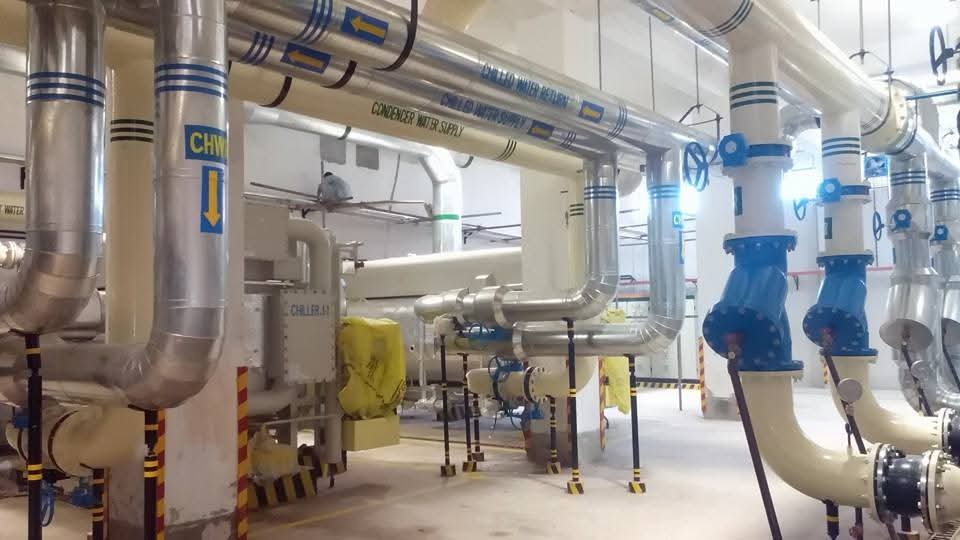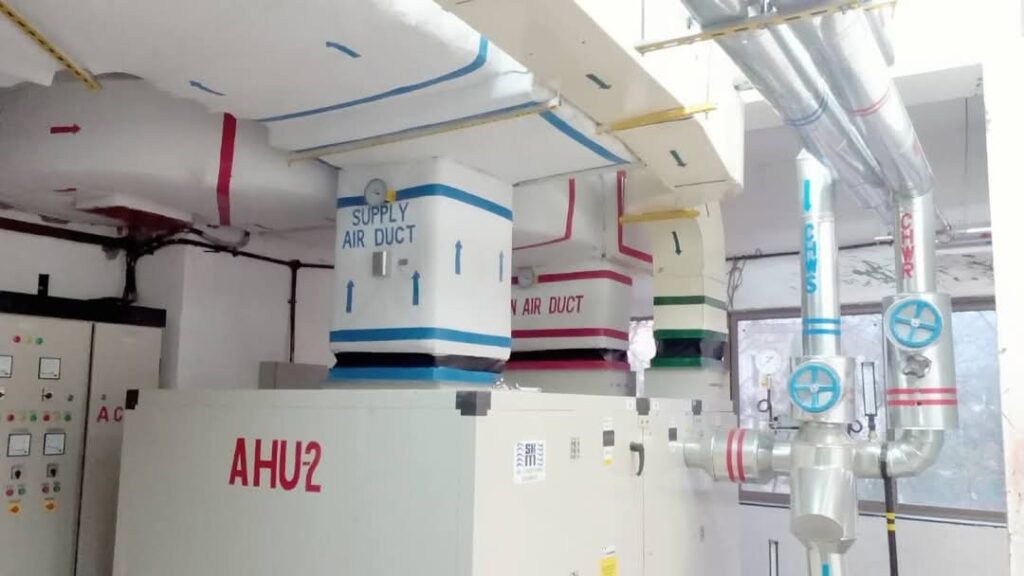Introduction
A chilled water-based air conditioning system is a highly efficient method of cooling large buildings, industrial facilities, and commercial spaces. Unlike direct expansion (DX) systems that use refrigerant to cool the air directly, a chilled water system circulates cooled water to air handling units (AHUs) or fan coil units (FCUs) to regulate indoor temperatures. This article explores when, why, and where chilled water systems are used.

When to Use a Chilled Water-Based System
Chilled water air conditioning systems are best suited for:
- Large Buildings and Complexes – Ideal for commercial buildings, hospitals, hotels, malls, and data centers where a centralized cooling system is more efficient.
- High Cooling Load Requirements – Suitable for buildings with significant cooling demands that exceed 300 tons of refrigeration (TR).
- Long Operating Hours – Beneficial for facilities running 24/7, such as hospitals, manufacturing plants, and airports.
- Energy Efficiency Needs – Used in projects focusing on energy savings and sustainability due to their lower energy consumption compared to DX systems.
- Integration with District Cooling – Often implemented where district cooling is available, allowing multiple buildings to share a common cooling source.
Why Use a Chilled Water-Based System?
1. Energy Efficiency
Chilled water systems are more efficient than traditional DX systems for large-scale applications. Water has a higher thermal capacity than air, requiring less energy to transport cooling loads over long distances.
Contact at +966-57-086-9150 for chilled water system installation in KSA
2. Scalability
These systems are modular and can be easily expanded to meet growing cooling demands without major infrastructure changes.

3. Improved Temperature Control
Chilled water systems offer precise cooling and dehumidification, essential for sensitive environments like data centers and pharmaceutical manufacturing.

4. Lower Maintenance Costs
With centralized cooling plants, maintenance is streamlined compared to multiple DX units scattered across a building.
5. Environmental Benefits
Using water as the heat transfer medium reduces refrigerant use, minimizing the environmental impact associated with high global warming potential (GWP) refrigerants.
Where Are Chilled Water-Based Systems Used?
Chilled water air conditioning is found in:
- Commercial Buildings – High-rise offices, shopping malls, and convention centers.
- Industrial Facilities – Factories, pharmaceuticals, and food processing plants requiring strict temperature control.
- Healthcare Facilities – Hospitals and research laboratories where cooling reliability is crucial.
- Educational Institutions – Universities and large campuses with multiple buildings.
- Data Centers – Facilities housing servers and IT equipment with high cooling demands.
- Hotels and Resorts – Providing efficient cooling for guest comfort.
- Airports and Large Transportation Hubs – Managing cooling for vast enclosed spaces.
- District Cooling Networks – Cities and communities benefiting from a centralized cooling approach.

Conclusion
Chilled water-based air conditioning systems provide energy-efficient, scalable, and reliable cooling solutions for large-scale applications. Their use is driven by the need for cost-effective, sustainable, and high-capacity cooling, making them essential in commercial, industrial, and institutional settings. While their initial setup cost may be higher, the long-term operational savings and environmental benefits make them a preferred choice in many applications.
